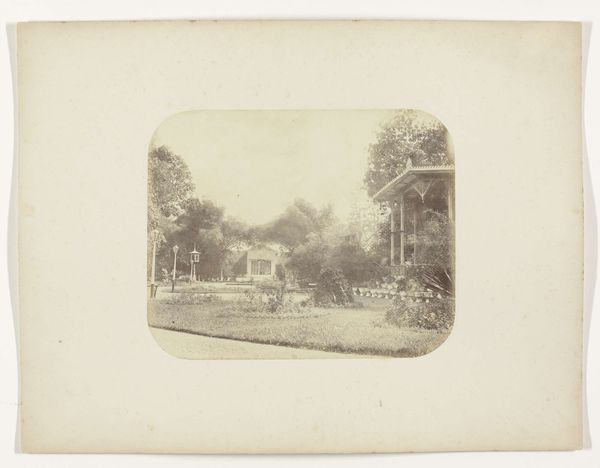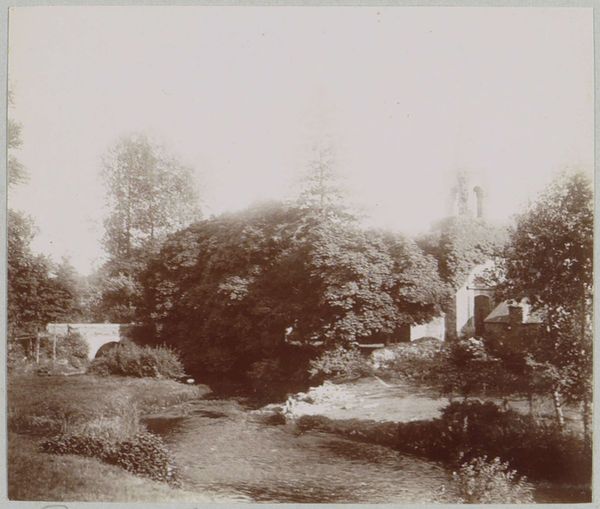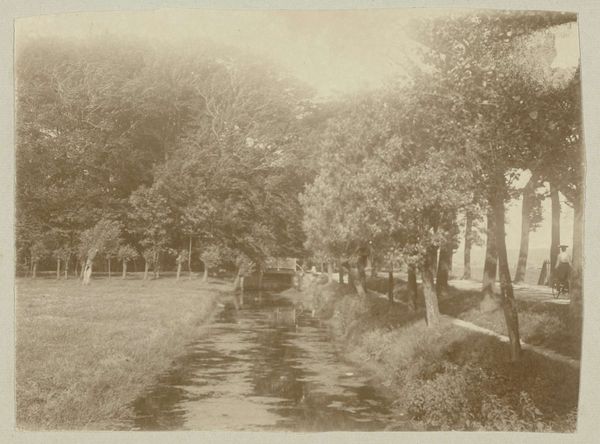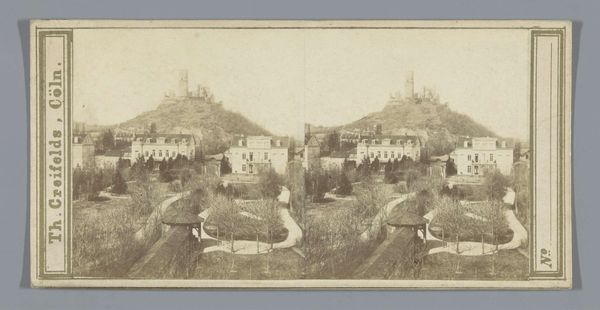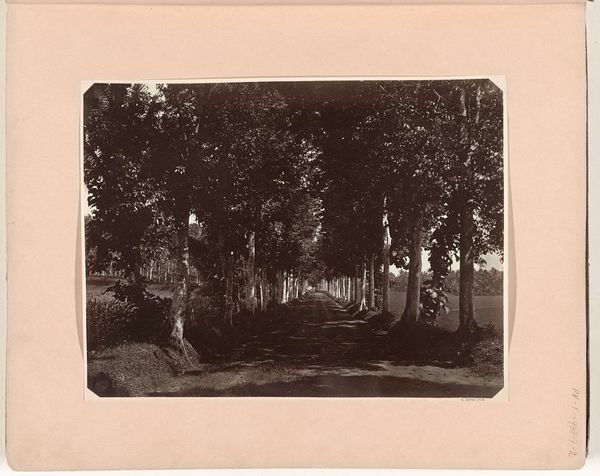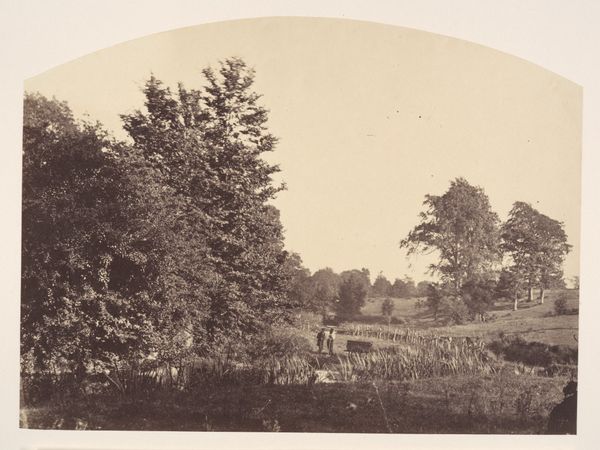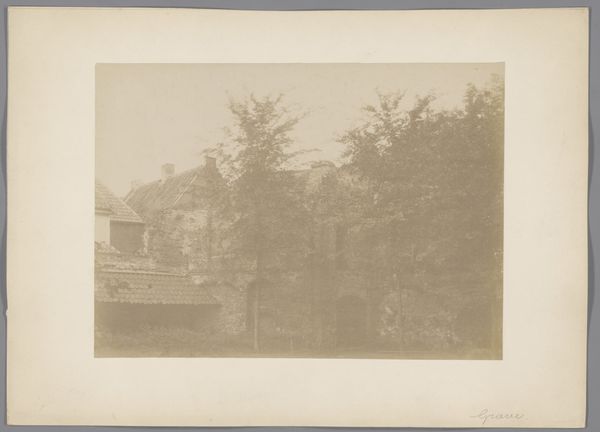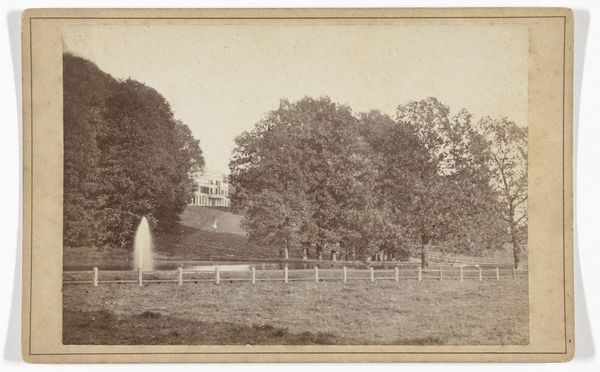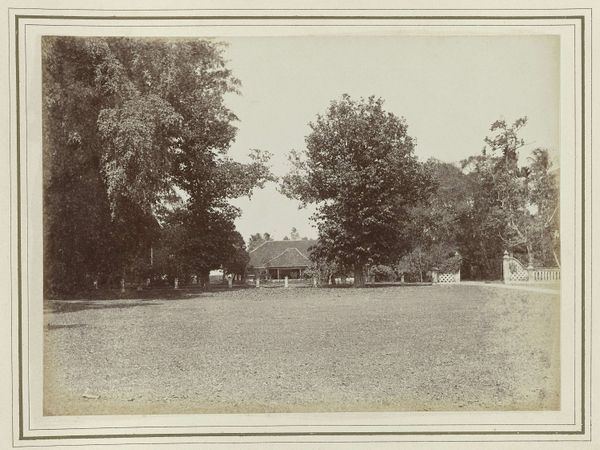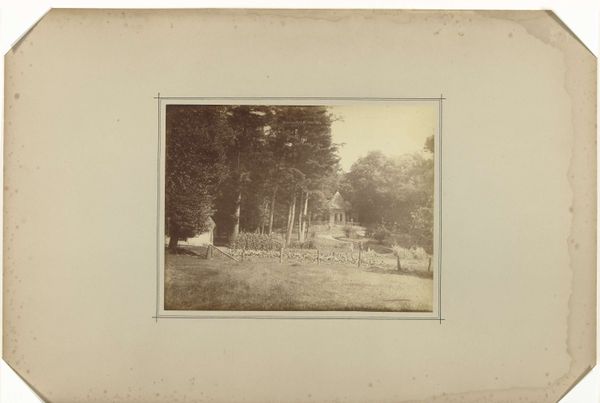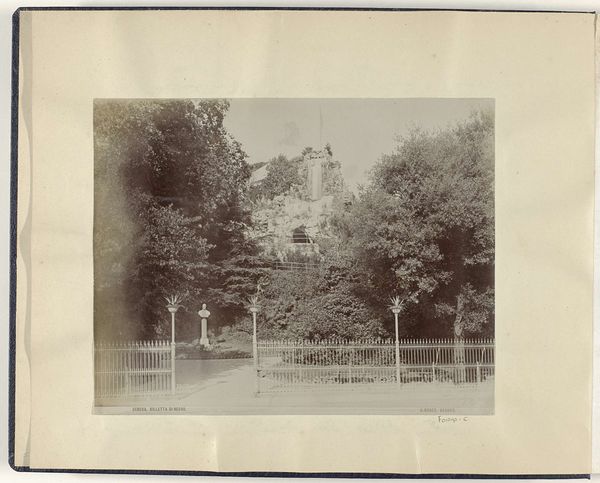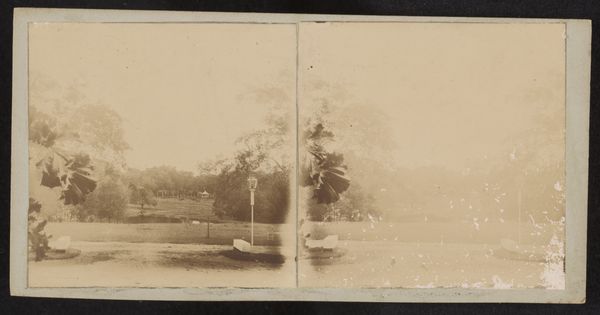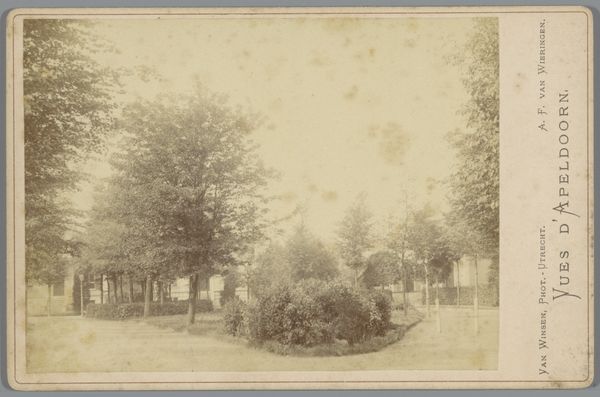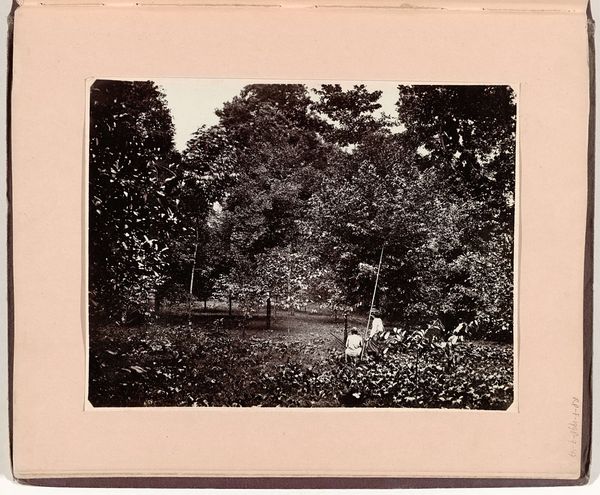
photography, albumen-print
#
portrait
#
asian-art
#
landscape
#
photography
#
albumen-print
Dimensions: height 85 mm, width 174 mm
Copyright: Rijks Museum: Open Domain
Editor: This is "Man in een draagstoel, Guangzhou, China," an albumen print made by Pierre Joseph Rossier in 1859. The composition feels very balanced, almost symmetrical. There's a fascinating texture created by the foliage and the grainy quality of the photograph itself. What do you see in this piece, considering it purely from its visual elements? Curator: Immediately, I am drawn to the stereoscopic format, which suggests an interest in depth and perspective, perhaps even a novel engagement with realism for the mid-19th century. The tonal range, while limited by the albumen process, is carefully managed. Note the placement of the central tree: it acts as both a divider and a unifier, bisecting the image yet visually tethering the two halves. What about the relationship between the figures in the foreground and the buildings in the background? Editor: I hadn’t considered the tree’s role in unifying the halves! The buildings seem purposefully subdued, almost faded. They’re certainly secondary to the man in the sedan chair. Do you think the photographer made choices about composition based on status and society, or based on the subject's location in space? Curator: Indeed. Rossier is not simply documenting, but structuring a visual hierarchy. Observe how the line of the carrying pole intersects with the central figure, reinforcing his position within the frame. The buildings are strategically blurred and fainter. Are they essential, or do they function primarily as a backdrop, providing context for the central scene without competing for visual attention? Editor: The pole is clearly an intentional focal element; everything sort of intersects and balances around that man's space and status. Thank you, viewing it as a structured arrangement and less as a found, documentary scene makes the image a lot richer. Curator: Precisely. Seeing is always more than simple recognition; it is interpretation.
Comments
No comments
Be the first to comment and join the conversation on the ultimate creative platform.
